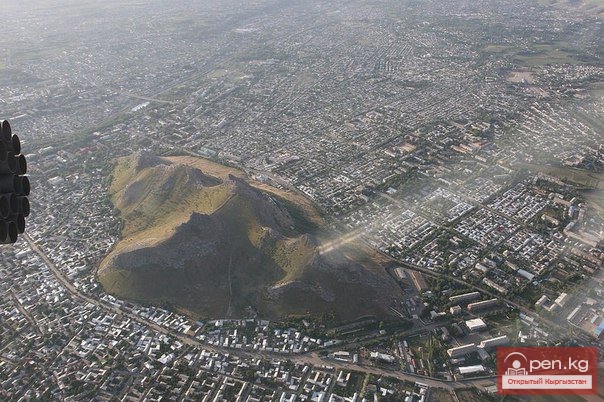Ak-Ulen Inscriptions of the 16th—17th Centuries
In 1937, historian B. M. Zima, who led the archaeological expedition of the Kyrgyz Pedagogical Institute, discovered a collection of stones with Buddhist formulas in the Ak-Ulen area. All stones with such inscriptions were collected and transported to Frunze, where they were kept in the historical-archaeological cabinet of the pedagogical institute. In 1939, the stones were donated to the State Hermitage through A. N. Bernshtam. These monuments were not published and remained little known until recently.


In 1977, we had the opportunity to study the Ak-Ulen inscriptions at the Hermitage. They are inscribed on small flat rock fragments with a sharp object quite clearly. At that time, with the assistance and help of S. S. Sorokin, we obtained photographs of 19 inscriptions, which are published for the first time in this work. Thirteen of them contain the religious formula "Om mani padme hum" written in Tibetan script (u-chen), while six inscriptions are executed in Central Asian Gupta (?) or Mongolian (Kalmyk) script.


Below are photographs of the Ak-Ulen monuments (see Table XXV, Fig. 1 — 13; Table XXVI, Fig. 1—6). A. N. Bernshtam believed that these "inscriptions are most likely from the 16th—17th centuries, the era of the Dzungars."


In 1986, we visited the State Hermitage again and examined the Tibetan and other inscriptions from Kyrgyzstan. There turned out to be 25 such stones, although one of them—a slab with a two-line inscription (measuring 40X17X4 cm)—was transferred to Burma in 1971.


In 1986, we visited the State Hermitage again and examined the Tibetan and other inscriptions from Kyrgyzstan. There turned out to be 25 such stones, although one of them—a slab with a two-line inscription (measuring 40X17X4 cm)—was transferred to Burma in 1971.


The Ak-Ulen area remains one of the interesting regions from which new information continues to emerge about the discovered monuments of Tibetan writing.















































